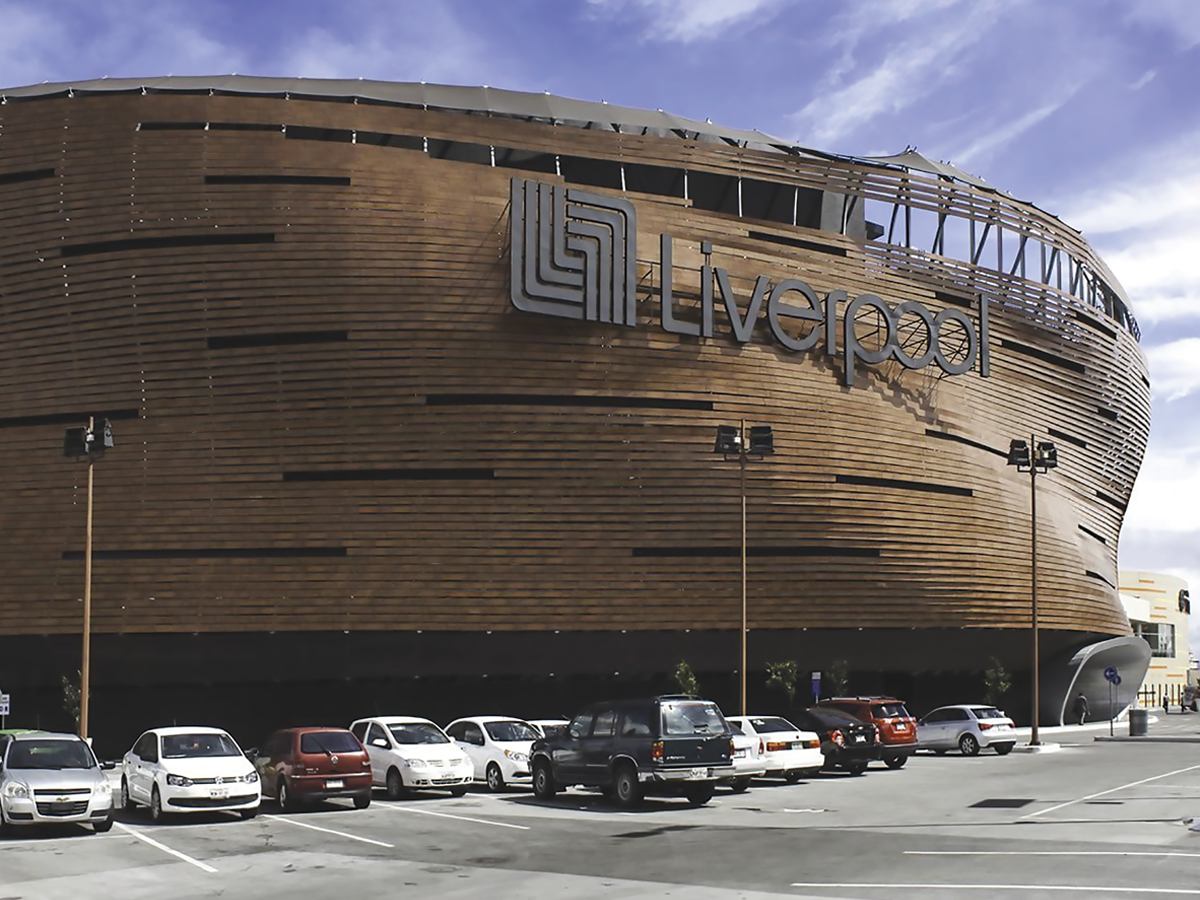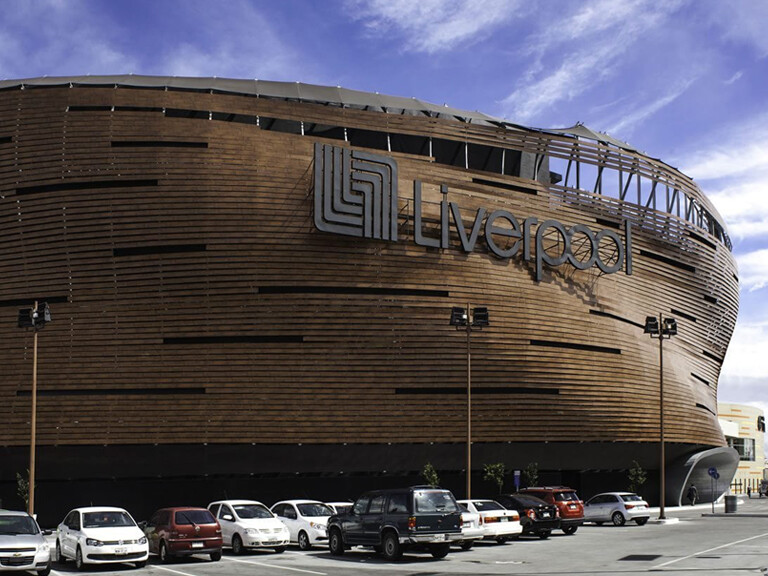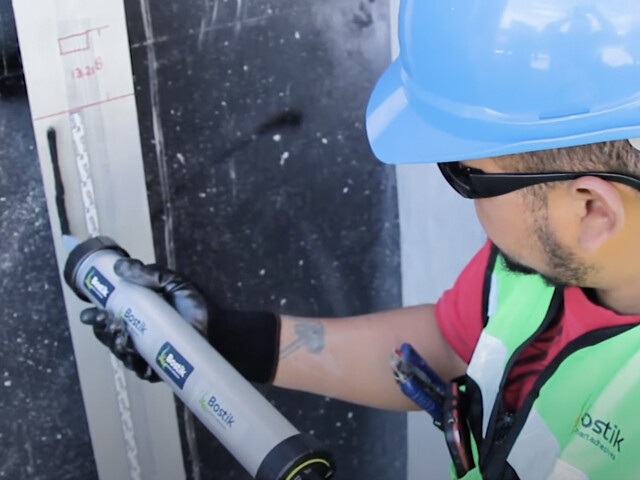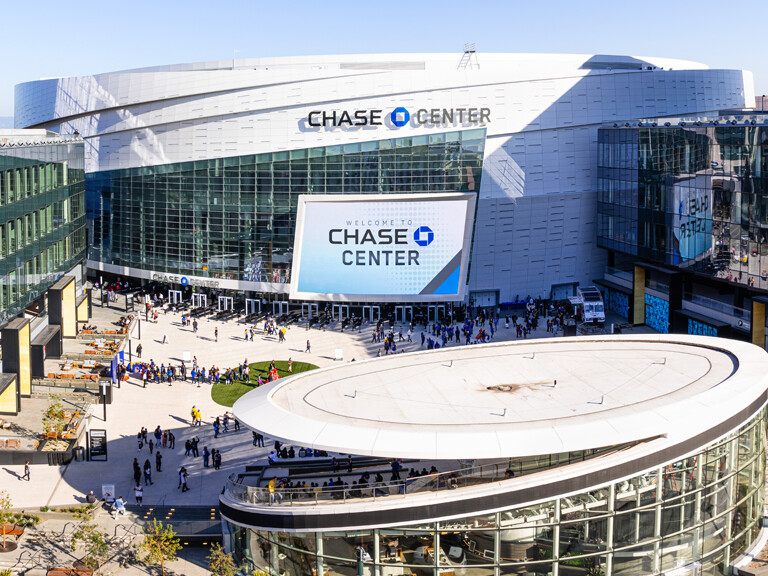Mar 3, 2022 - 5 Minutes
Are Façade Adhesives the Bonding Solution of the Future? | Bostik Blog

Liverpool Shopping Centre Toluca Gallery
Toluca Mexico
Bostik began working successfully with ventilated façade projects in Europe roughly 30 years ago. In 2012, Bostik began a similar program in Mexico to much-celebrated success.
Now Bostik has introduced its tried-and-true PanelTack™ system to the rest of North America. Daniel Sanchez, Bostik’s National Sales Manager, has worked diligently with this product these last eight years. Below he explains some of the reasons why PanelTack offers so many positive solutions to this growing area within the construction sector.
What Is a Ventilated Façade?
Cladding the exteriors of today’s building has evolved into a veritable science. What historically was meant to simply offer protection from the outside elements has evolved into an advanced system that offers so much more. Today, these are commonly referred to as “ventilated façades.”
A ventilated façade (or “rainscreen”) is a very specific construction method that includes a physical separation between the exterior wall cladding and the interior building. This results in an open cavity, allowing the exchange of the air contained between the wall and the outer cladding. The cavity provides a range of thermal, acoustic, aesthetic and functional advantages such as energy savings, maximum durability and aesthetic benefits that add much more than just weather protection — though it adds that, too.
What Are the Most Common Exterior Cladding Materials Used Today?
There is an extraordinary amount of materials that can be used for cladding depending on budget, design aesthetic and environmental factors. The most common cladding options include high-pressure laminates, fiber cement boards, aluminum composite materials, thin gauged porcelain tile panels, “regular” porcelain tile, natural stones, pressed mineral wool, glass fiber reinforced concrete, and many others.
What Is the Typical Size of These Cladding Panels?
The most commonly used size is 4 feet by 8 feet for most materials. But panel sizes can range from 2 feet by 4 feet to up to 5 feet x 10 feet for lighter weight materials such as gauged porcelain paneling.
What Are Some of the Advantages in Using the “Chemical Method” Versus the Traditional “Mechanical Method”?
There are many variable factors to consider when using mechanical techniques. If a mechanical fastener is damaged, it must be discarded which leads to extra damage materials costs. If there is a mistake made using a mechanical method, it could mean the entire panel is compromised and unsafe to use.
Adhesives have forgiveness. Adhesives are not going to break, and if there is a mistake, installers can simply scrape away the error and reapply. With adhesive bonding, there is time to prevent catastrophe. They not only do the same job as the mechanical fasteners, but they do it better.
Chemical adhesives also have the benefit of creating a more aesthetically-pleasing look that will outlast mechanical methods. With adhesives, there are no unsightly rivets, no obvious fasteners and no need to worry about rust stains or dirt streaks a few years down the road. Overall, the “look” of an exterior façade installed the traditional way will not be as monolithic as those resulting from an installation using the chemical method.
Will the "Chemical Method" Overtake the "Mechanical, Hook & Anchor Method" in North America?
There is a common misconception that mechanical fastening systems are safer than a chemical method. That is simply untrue. Mechanical fasteners lead to more potential mistakes and damage to the façade and building structure and do not last as long as adhesive.
The chemical method has gained significant interest and traction among architects and specifiers, the people representing the future of architectural construction.
In addition to the extensive testing according to European standards, the PanelTack system has undergone testing to satisfy U.S. standards as well. Bostik is excited to announce the successful passing of AAMA 501.6 Seismic Test Method, showing exceptional strength in conditions of seismic tremors, heavy traffic and extreme wind load, and the NFPA 285 Standard Fire Test, showcasing the fire stability and resistance of PanelTack. These testing processes are thorough and demonstrate the significant advantages the adhesive system has to offer.
One of the Most Successful Stateside Installations Was That of La Quinta Inns Throughout the USA. Exactly How Big Was This Project and Why Was It So Successful?
PROJECT SPOTLIGHT: LA QUINTA INN & SUITES
So far there are more than 200 La Quinta Inns successfully clad with ventilated facades consisting of thin porcelain tiles attached to the buildings using Bostik’s PanelTack system with hundreds more in the works. This same customer is already chasing specifications with some of the largest hotel chains in America. So, Bostik is confident this will remain a big source of future projects.
Why did they choose PanelTack? Because it is easy, fast, lightweight and practically noise, dust and rubbish-free. All of this makes it the ideal specification for hotel retrofit work.
Additionally, our system allows the use of very thin panels, such as gauged porcelain tiles, which translates into less overall weight added to an existing building constructed years ago.
The most outstanding information about the ongoing La Quinta Inn project is the cost of installation has been half as much as that of mechanical. And the time of installation has been 60% less as well!
Bostik National Sales Manager
When Will PanelTack Officially Be Introduced to the United States?
It’s already here! Bostik officially introduced the PanelTack system to the U.S. in 2020 through a series of educational demonstrations, webinars, podcasts and more.
Bonding Solutions for the Future
Bostik has its sights set on building the world to come by offering future generations innovative and safe solutions that drive the possibility of design forward. They have been a leader in the field of wall cladding and panel bonding with the PanelTack system for more than 30 years and look forward to bringing their innovative product to the U.S.
For a sneak peek of what is to come, check out this video. And to get started with the PanelTack system, get in touch with Bostik today.



